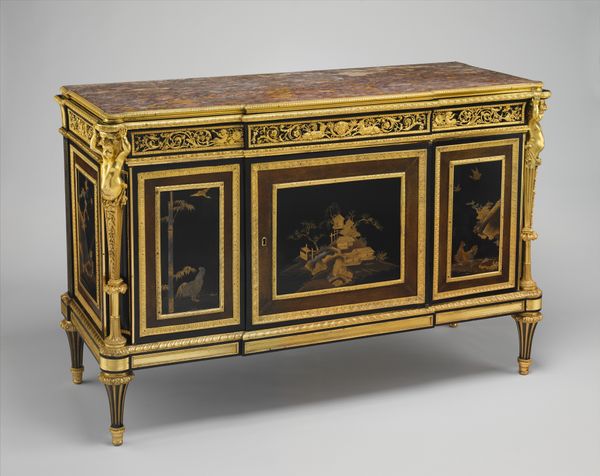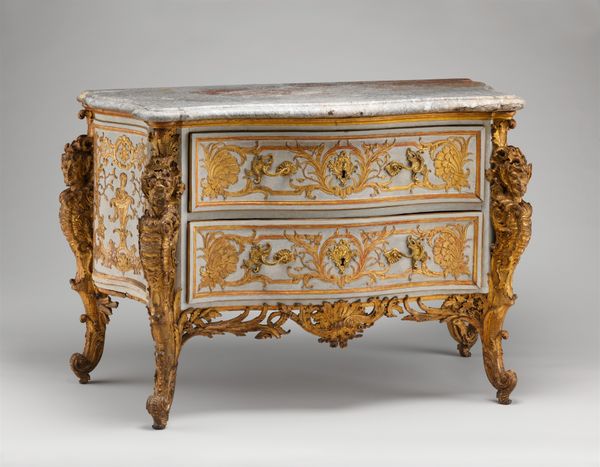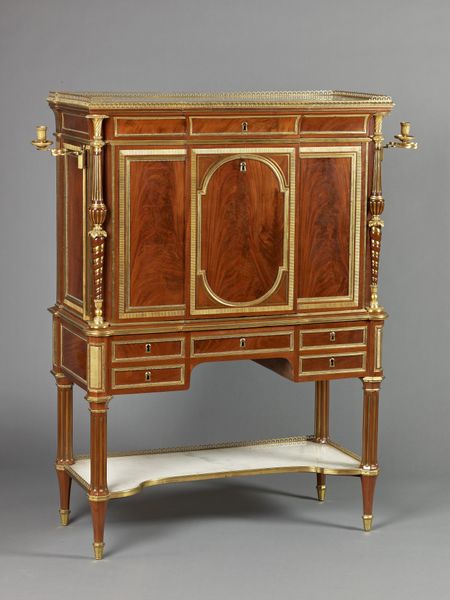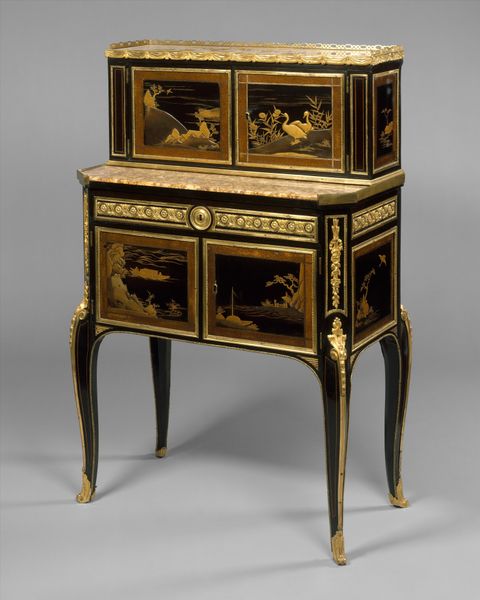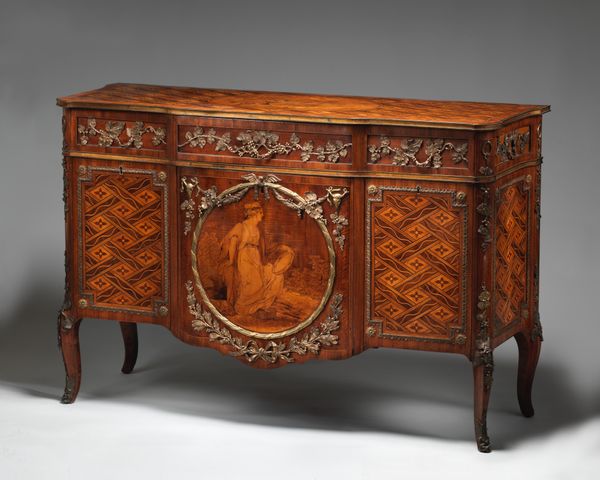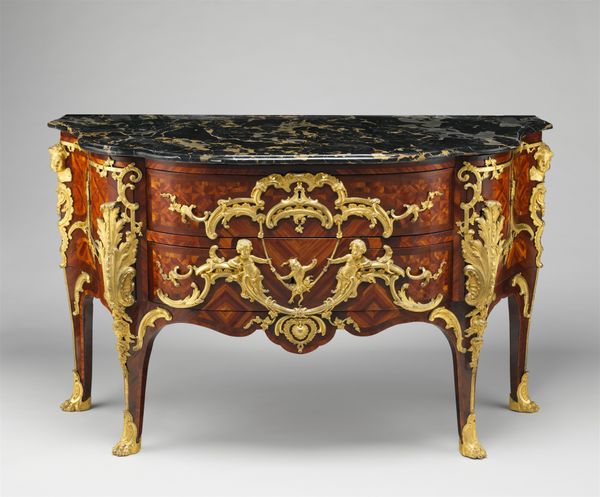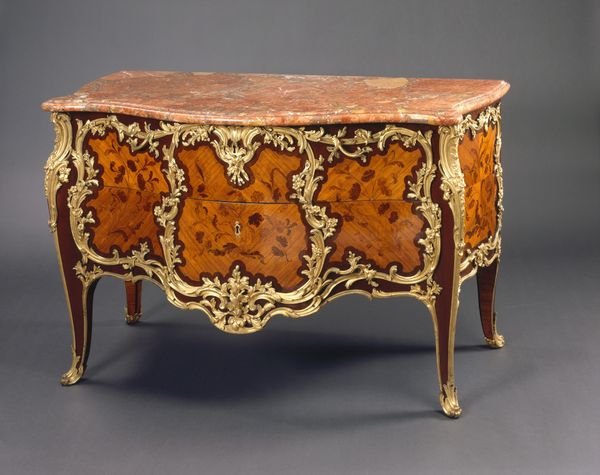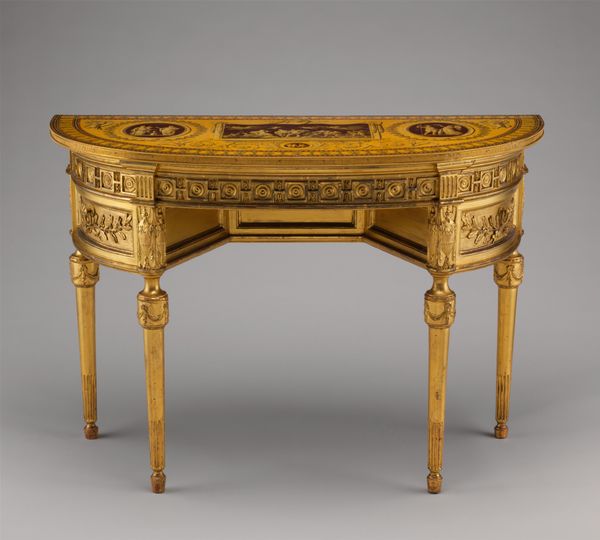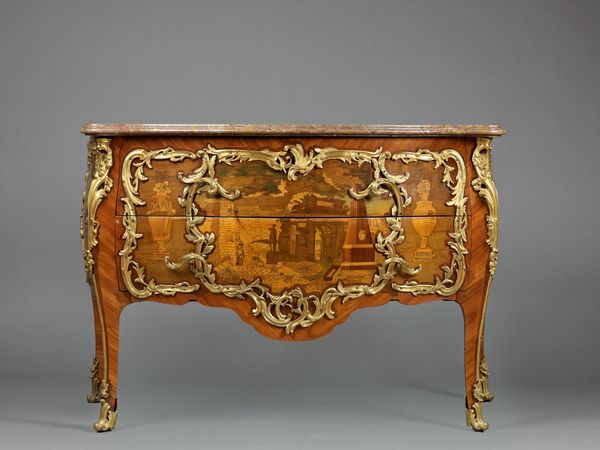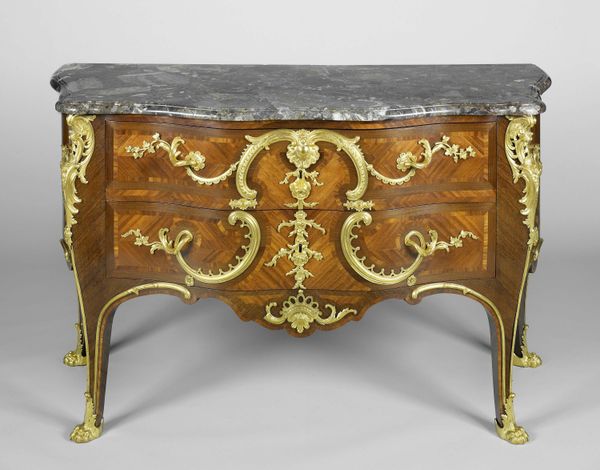
Dimensions: 35 1/4 x 53 1/2 x 27 1/4 in. (89.5 x 135.9 x 69.2cm)
Copyright: Public Domain
Editor: This is the "Commode à vantaux" made by David Roentgen, sometime between 1770 and 1784. It's currently at the Metropolitan Museum of Art. The materials used appear to be wood, with some carvings and possibly some sculpture, but I'm especially taken by the scenes inlaid on the doors and sides. It creates a storybook effect. How do you read this piece? Curator: Indeed. What first strikes the eye is the fastidious control of line, a clear articulation of planes across the entire facade. Consider the relationship between the swirling, organic forms of the ormolu mounts and the strict geometry of the commode’s overall structure. It is a dialogue of restraint and exuberance. Note how this contrast influences your understanding of interior/exterior space depicted by the wood marquetry. Does this balance of form speak to any prevailing design principles of the late 18th century? Editor: Yes, I can see the push and pull. Is this tension intentional? The gilded pieces give an overwhelming sense of opulent embellishment which in some ways fights against the simple narrative shown in the wood. Curator: Precisely. This juxtaposition creates an opportunity for interpretation, as an interplay between representation and abstraction. Consider the application of ornament. Note how they serve not merely as embellishment but also articulate the structural divisions, enhancing rather than obscuring the underlying architecture. In effect, one appreciates how a material such as wood informs this piece. Editor: So, you're saying that it's not just decorative? More that the carvings accentuate and amplify the inherent form? Curator: Precisely. That interplay between decoration and structure reveals much about its creation. Form and function create a dynamic where each defines the other. A clear design intention becomes noticeable. Editor: That's fascinating. I didn’t think I’d be so interested in furniture. It almost forces me to rethink what ‘art’ really is! Curator: The intersection of craftsmanship, design, and artistic vision are always fruitful considerations when analyzing art.
Comments
No comments
Be the first to comment and join the conversation on the ultimate creative platform.
